Based on the results of the project entitled: “Optimization of the energy response function of a neutron survey meter using a Helium proportional counter”, a team of researchers of the Institute for Nuclear Science and Technology (INST) have developed a neutron detector for measuring the ambient dose equivalent H*(10) rate in the energy range from thermal to 15 MeV with high sensitivity and fully compliant with the recommendations of the international standard IEC 61005-2014 for neutron survey meters.
The developed instrument consists of a 3He proportional counter embedded in a multi-layer moderator made of high-density polyethylene (HDPE) and Cadmium (Cd). It is designed with the outer dimensions of 20.5 cm in diameter and 24.5 cm in length, and about 6 kg in weight. The sensitivity, the linearity as well as the performance of the instrument in the workplace was measured at the neutron calibration laboratory of the INST using a standard neutron field of 241Am-Be and several simulated workplace neutron fields.
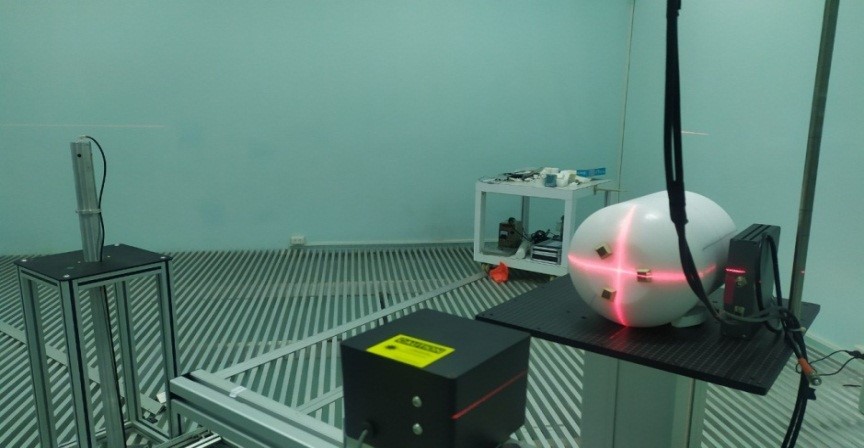
The layout of the experiment at the neutron calibration laboratory of the INST
The obtained results show that the neutron sensitivity of this detector reaches 2.84 cps/µSv.h-1. The relative H*(10) response of the instrument has a similar tendency to that of other commercial neutron survey meters (e.g. Aloka TPS 451C, Fuji electric NSN1, NDN1, etc.).
DETECTOR CONFIGURATION
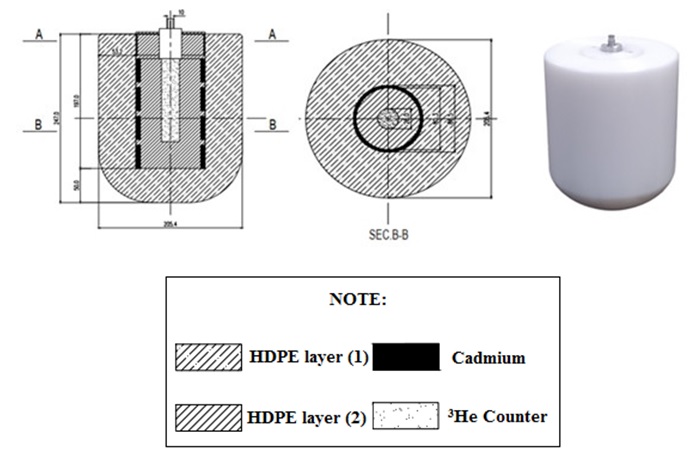
SPECIFICATIONS
|
Detector type
|
3He proportional counter
|
|
Quantity
|
Neutron H*(10) (Neutron ambient dose equivalent rate)
|
|
Energy range
|
0.025 eV-15 MeV
|
|
Measurement range
|
0.1 µSv/h - 10 mSv/h
|
|
Sensitivity
|
2.84 cps/µSv.h-1
|
|
Neutron fluence response
|
Compliant with ICRP 74 (Response Curve of H*10/Ф):
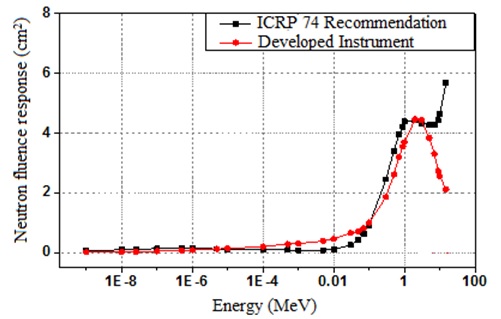
|
|
Relative H*(10) response
|
-
Compliant with IEC 61005 (2014).
-
Similar to the response of other commercial neutron survey meters (e.g. Aloka TPS 451-C, Fuji NSN1, NDN1, etc.)
-
E < 50 keV: 0.24 - 5.3
-
50 keV - 10 MeV: 0.71 - 1.3
-
E > 10 MeV: 0.5 - 0.7
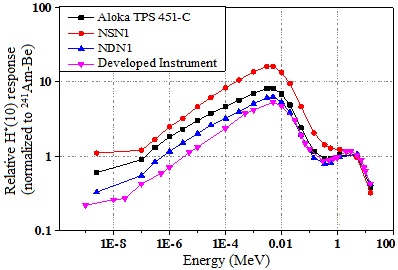
|
|
Angular dependence
(241Am-Be)
|
< ±20 % (0o - 180o from the standard direction)
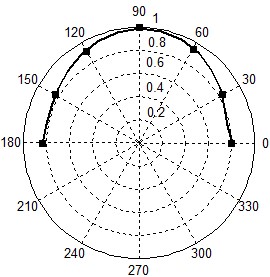
|
|
Gamma rejection
|
Up to 50 mSv/h
|
|
Dimensions
|
20.5 cm x 24.5 cm
|
|
Weight
|
< 6 kg
|